Approximately 2,000 exhibits have been accumulated in the museum fonds: photographs, documents, letters, periodicals and objects.
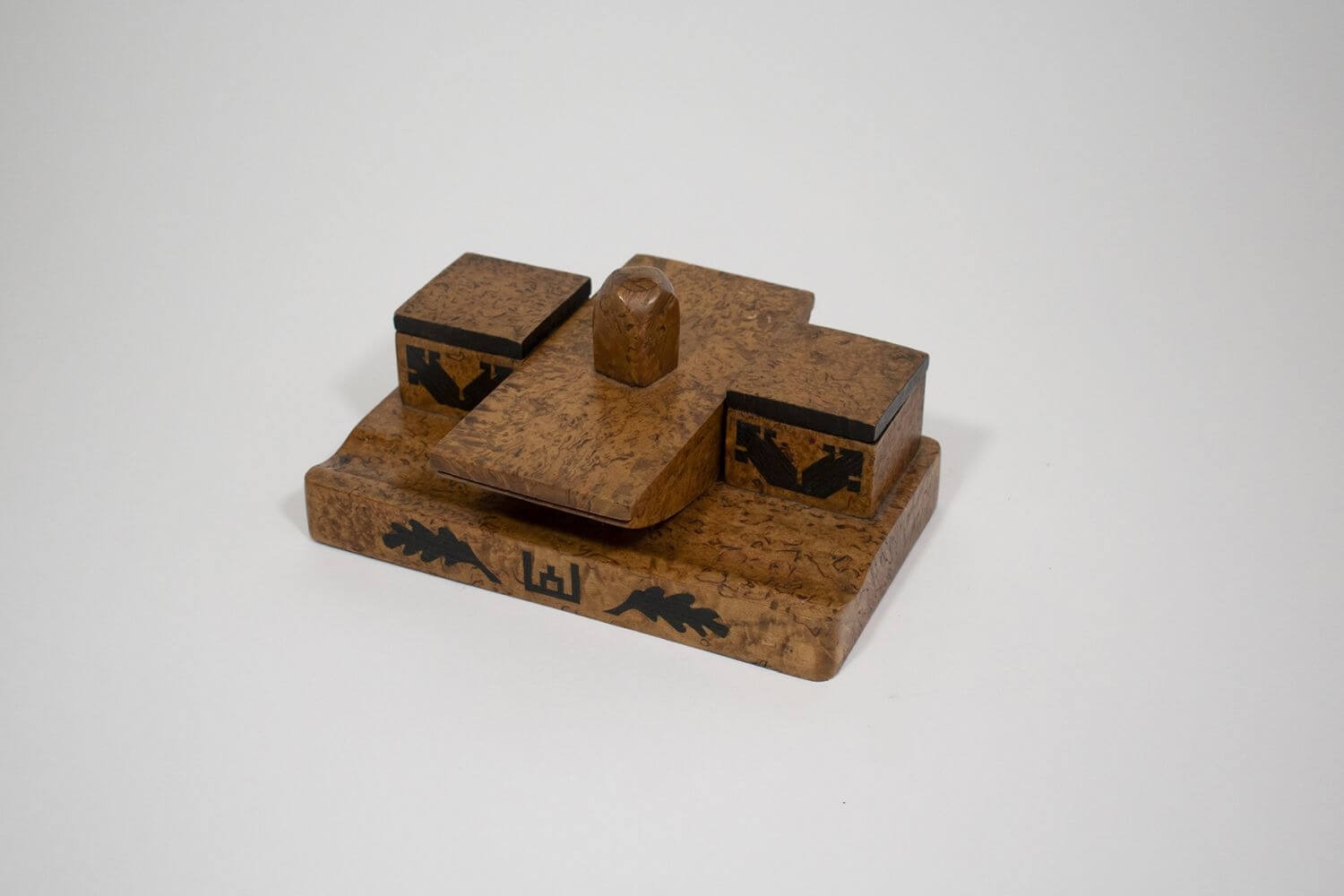
An inkwell made by Antanas Subačius-Tauras, a member of the staff of the Merkys territorial unit in the Dainava Military District.
Antanas Subačius-Tauras joined the partisans in 1944. He was killed on 16 March 1947 during an ambush. His body was thrown into Mergelių Akys Lake. His father pulled his son’s remains out of the lake silt and secretly buried them at the old Druskininkai city cemetery.
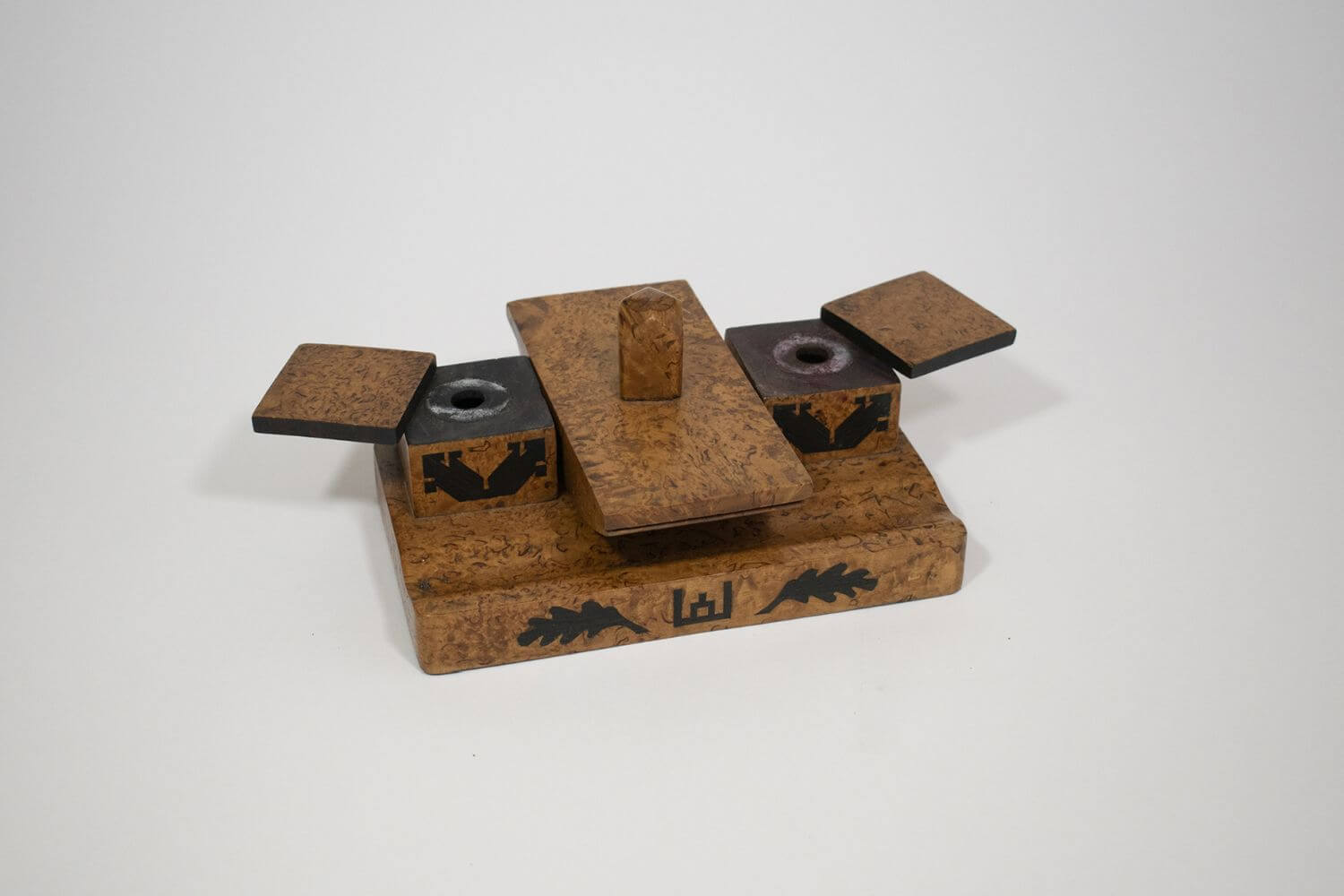
An inkwell made by Antanas Subačius-Tauras, a member of the staff of the Merkys territorial unit in the Dainava Military District.
Antanas Subačius-Tauras joined the partisans in 1944. He was killed on 16 March 1947 during an ambush. His body was thrown into Mergelių Akys Lake. His father pulled his son’s remains out of the lake silt and secretly buried them at the old Druskininkai city cemetery.
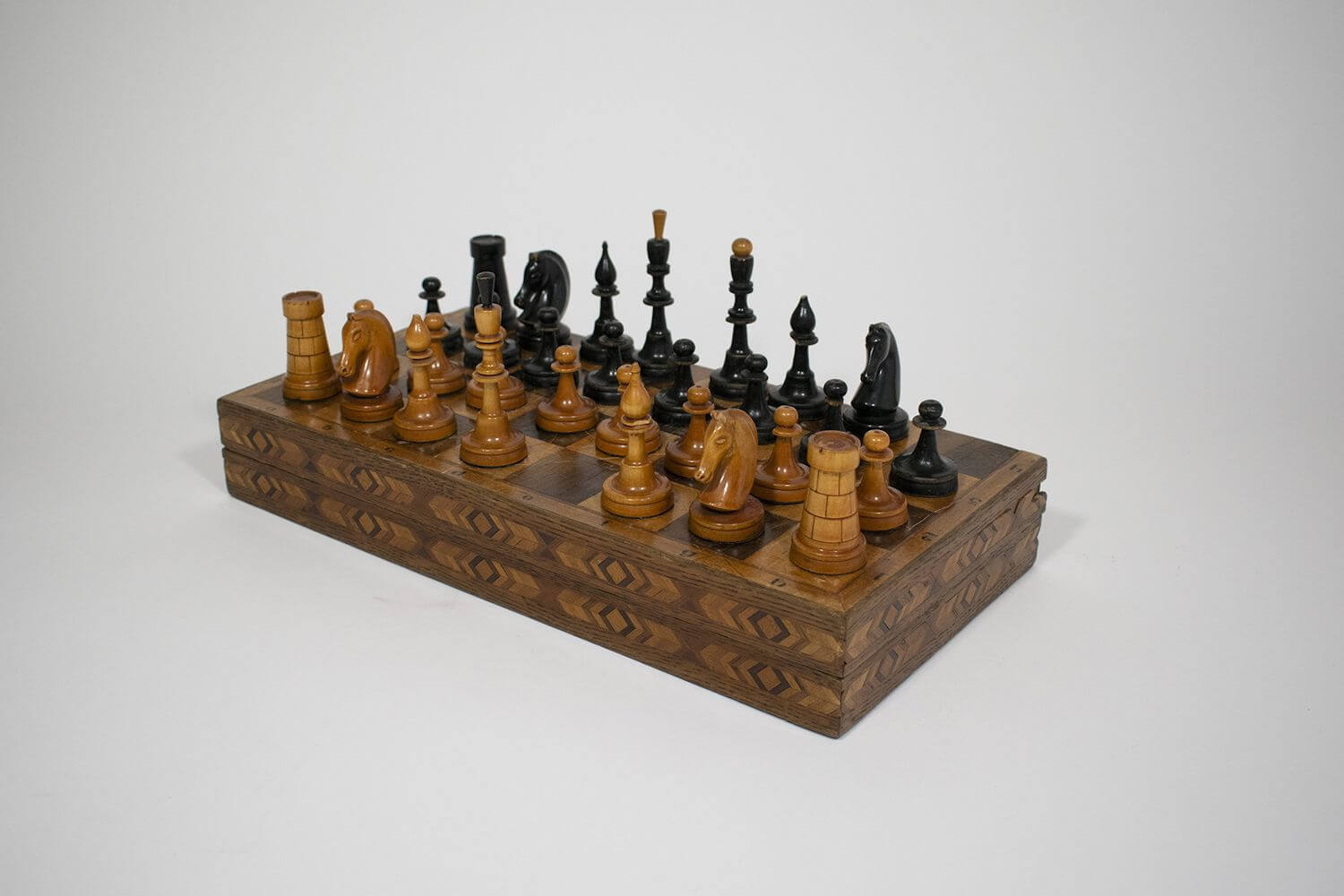
A chess set made by political prisoner Vytautas Kvaraciejus in a hard labour camp. Vorkuta, Komi SSR, 1953.
A liaison for the Dainava Military District partisans, Vytautas Kvaraciejus went by the code name “Naikintuvas” (“Fighter Plane”). He was arrested in 1950. In 1951, he was sentenced by the military tribunal to 25 years in a hard labour camp and five years in exile. He was taken to the Komi ASSR. He was released in 1956 and returned to Lithuania.
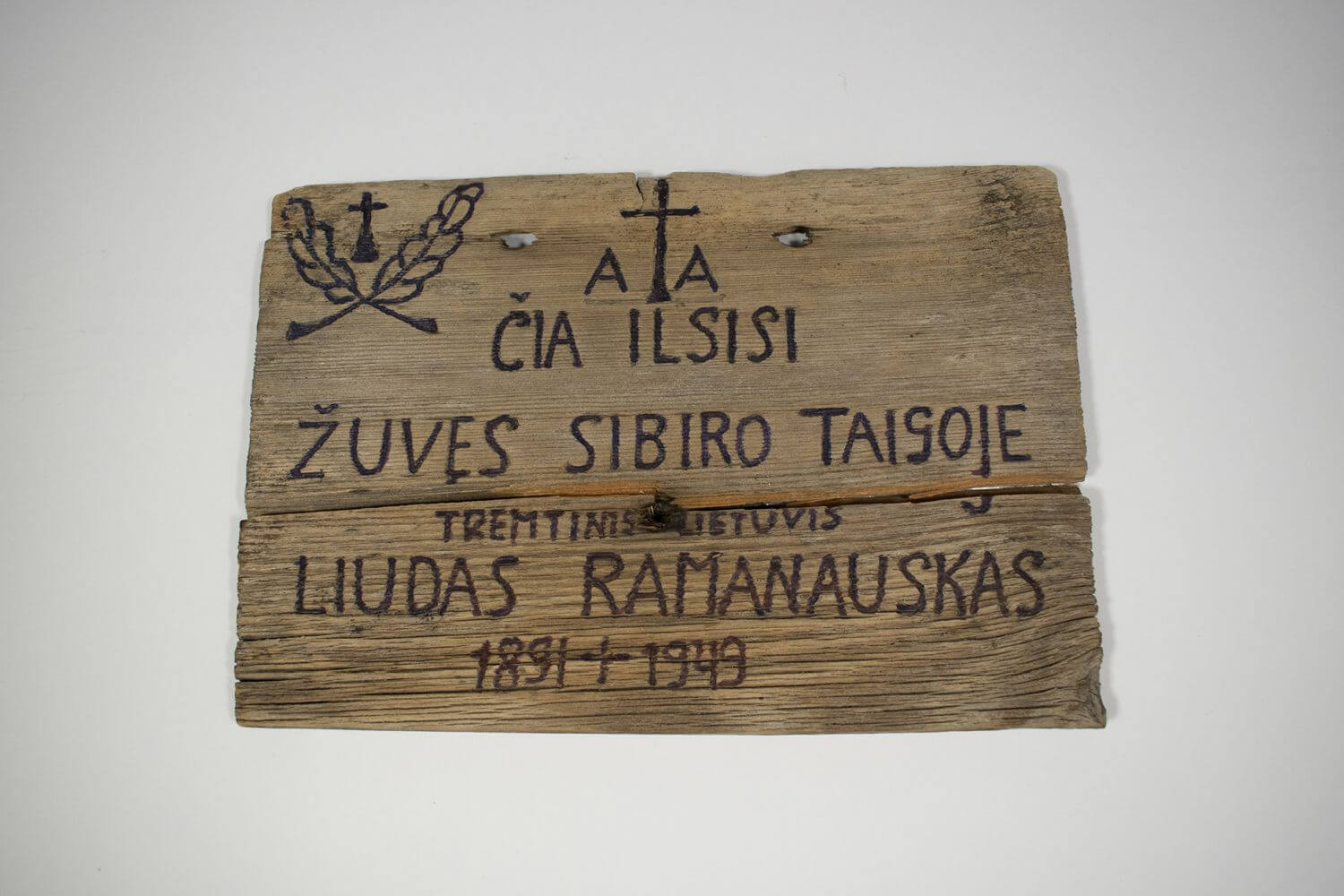
Plaque from the grave of Liudas Ramanauskas, who died in exile in 1949.
Liudas (Ludvikas) Ramanauskas was the father of Brigadier General Adolfas Ramanauskas-Vanagas, a signatory of the Lithuanian Partisans Declaration of 16 February 1949 and the Commander of the Lithuanian Armed Forces. In May, he was exiled to Sarala (Khakas Autonomous Oblast, Krasnoyarsk Krai) together with his son Albinas and daughter Aldona. He died in exile on 2 January 1949. His daughter Aldona returned to Lithuania illegally in 1958. She stayed in hiding for several years. His son Albinas came back in 1962.
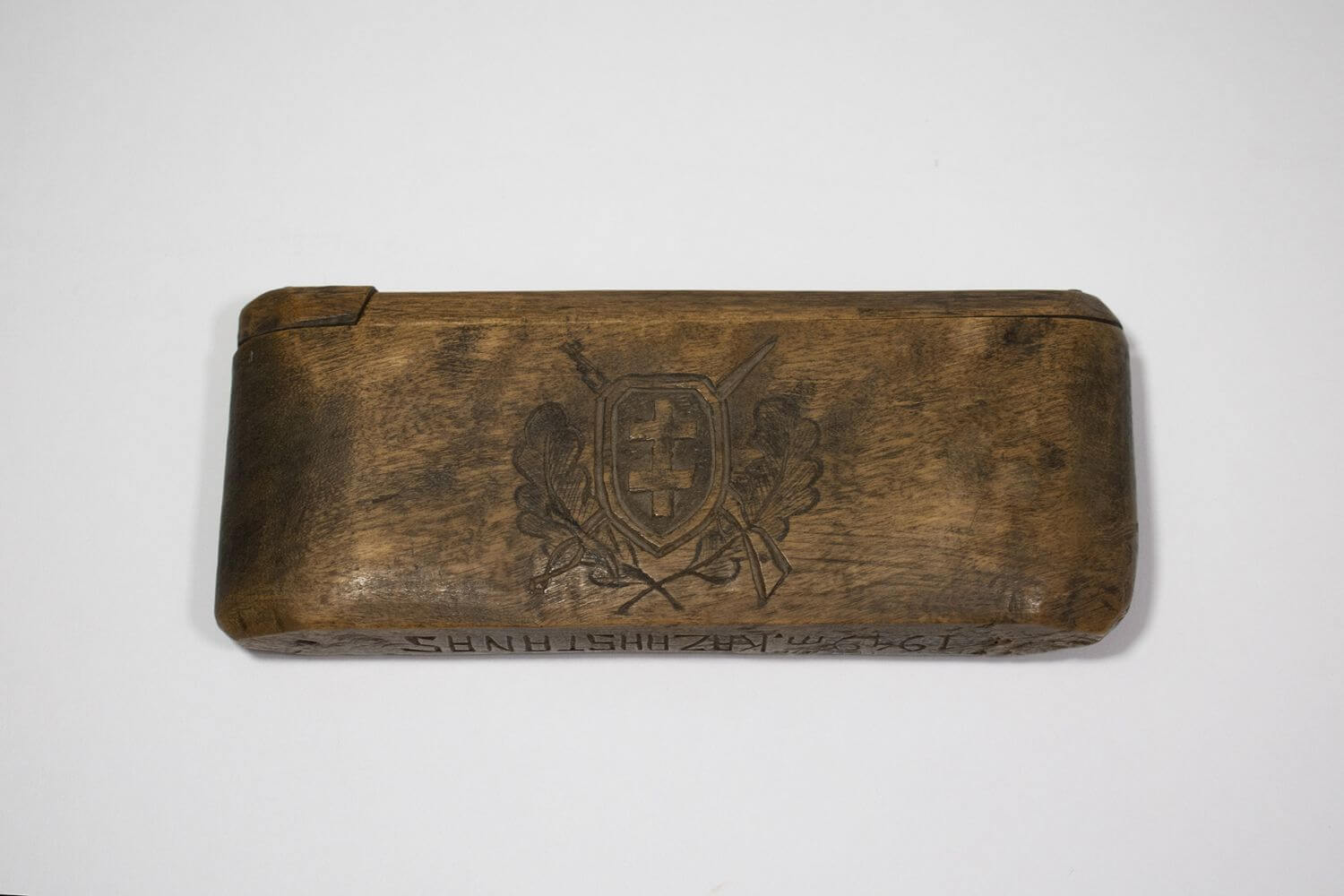
An eyeglass case made by Vytautas Majoras for his fellow political prisoner Antanas Dambrauskas. Spassk, Karaganda Oblast, Kazakh SSR, 1949.
Antanas Dambrauskas was an educator, lecturer, translator of works of ancient literature, and member of the underground. He was arrested in 1945. In 1946, he was sentenced by the military tribunal to 10 years in a hard labour camp and five years in exile. He was imprisoned in hard labour camps in Chelyabinsk Oblast, the Kazakh SSR, Kemerovo Oblast and Omsk Oblast. In 1955, he was “freed” into exile in the Kazakh SSR. He returned to Lithuania in 1956.
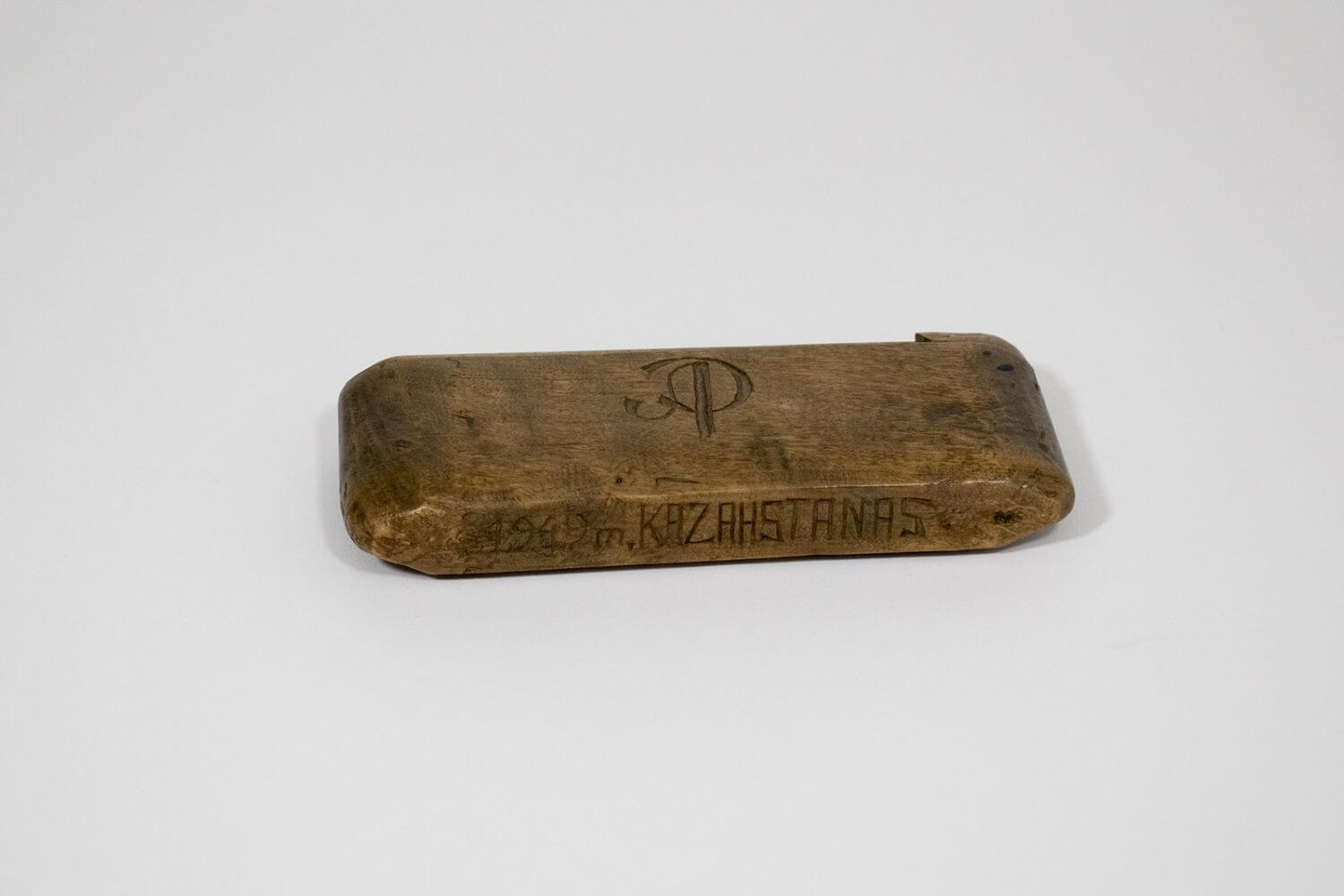
An eyeglass case made by Vytautas Majoras for his fellow political prisoner Antanas Dambrauskas. Spassk, Karaganda Oblast, Kazakh SSR, 1949.
Antanas Dambrauskas was an educator, lecturer, translator of works of ancient literature, and member of the underground. He was arrested in 1945. In 1946, he was sentenced by the military tribunal to 10 years in a hard labour camp and five years in exile. He was imprisoned in hard labour camps in Chelyabinsk Oblast, the Kazakh SSR, Kemerovo Oblast and Omsk Oblast. In 1955, he was “freed” into exile in the Kazakh SSR. He returned to Lithuania in 1956.
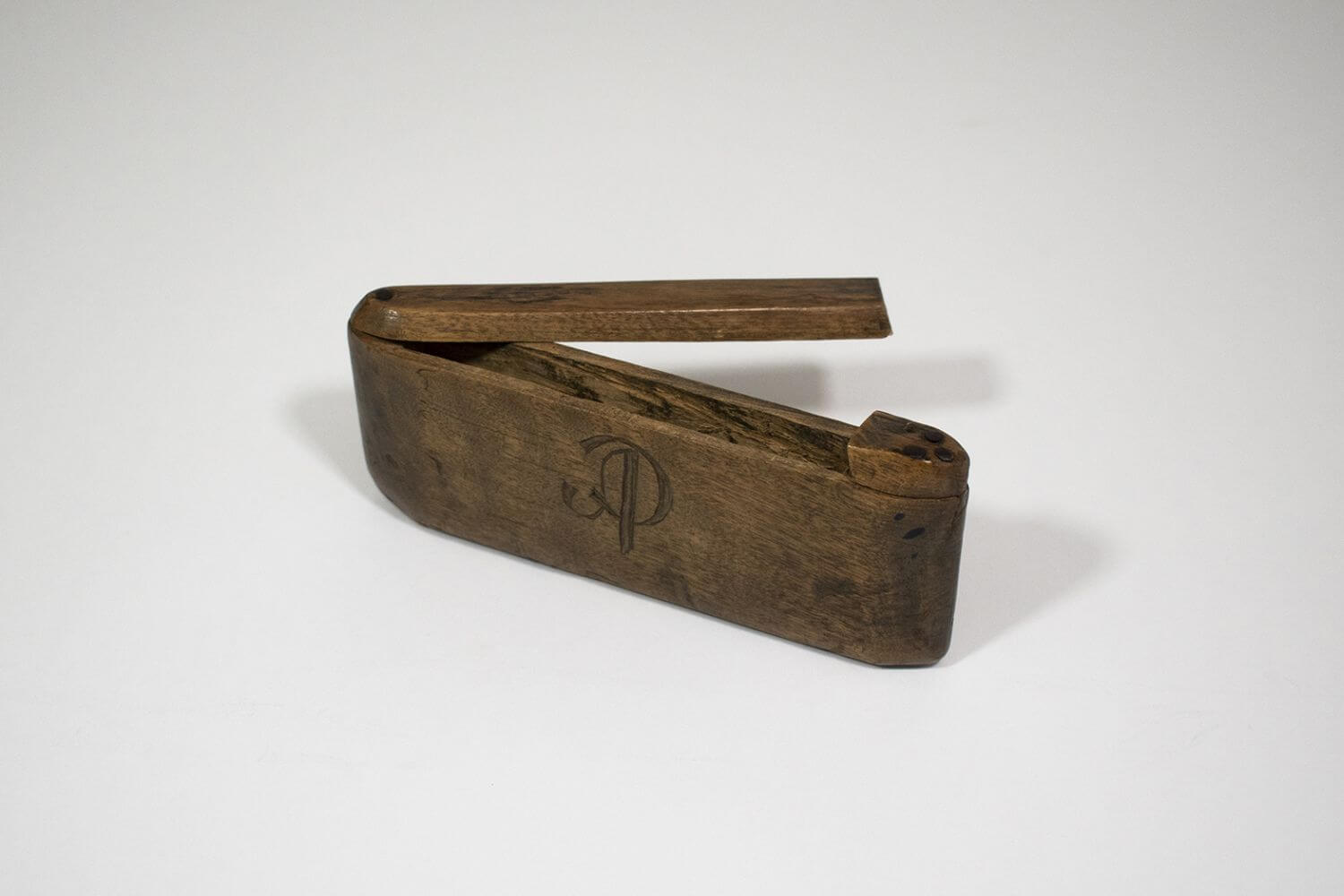
An eyeglass case made by Vytautas Majoras for his fellow political prisoner Antanas Dambrauskas. Spassk, Karaganda Oblast, Kazakh SSR, 1949.
Antanas Dambrauskas was an educator, lecturer, translator of works of ancient literature, and member of the underground. He was arrested in 1945. In 1946, he was sentenced by the military tribunal to 10 years in a hard labour camp and five years in exile. He was imprisoned in hard labour camps in Chelyabinsk Oblast, the Kazakh SSR, Kemerovo Oblast and Omsk Oblast. In 1955, he was “freed” into exile in the Kazakh SSR. He returned to Lithuania in 1956.


